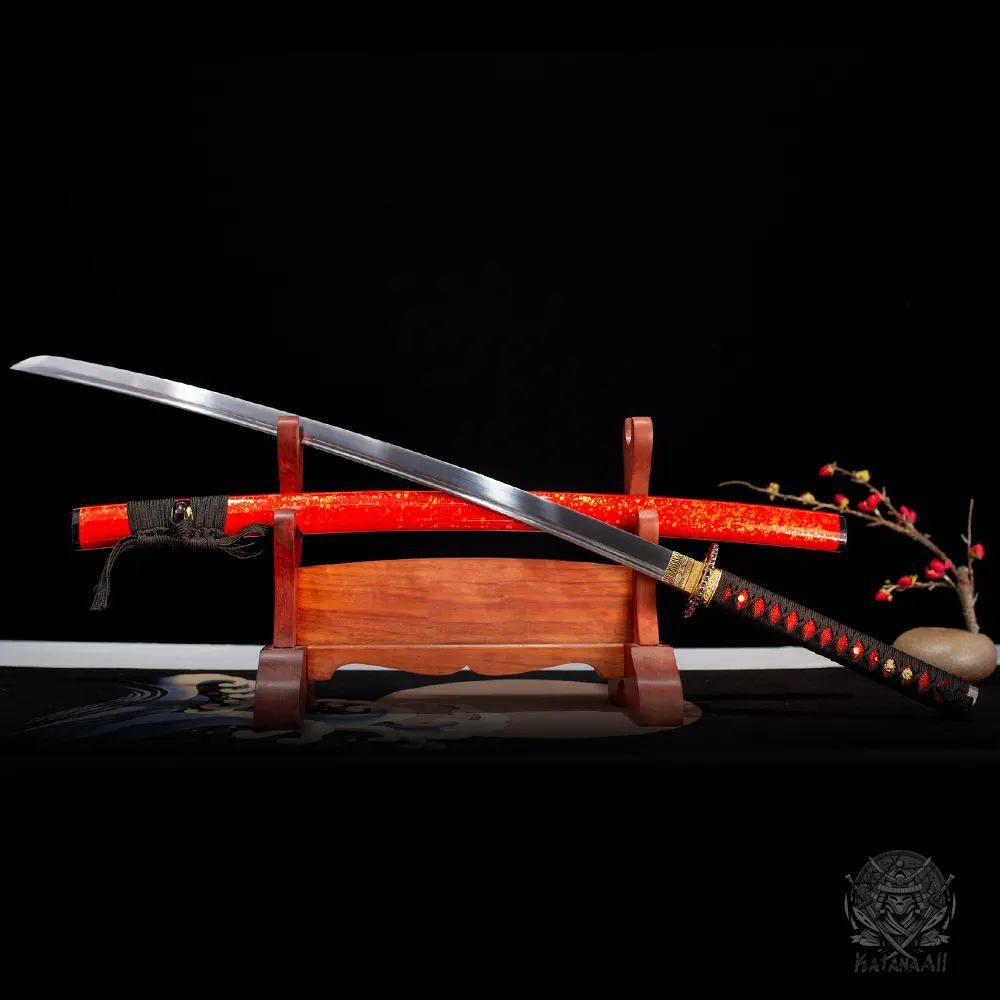
When it comes to selecting a high-quality katana, enthusiasts and collectors alike understand the importance of craftsmanship, materials, and design. A katana is more than just a weapon; it is a symbol of Japanese heritage, a work of art, and for some, a practical tool. Whether you’re a martial artist, a collector, or simply someone looking to own a piece of history, this guide will walk you through the essential factors to consider when choosing a high-quality katana.
1. Understand the Purpose of Your Katana
Before diving into the details, identify why you’re purchasing a katana:
- Decorative Use: If the katana is intended for display, focus on aesthetic features like engravings, fittings, and blade polish.
- Practical Use: For martial arts training or cutting practice (tameshigiri), prioritize durability, balance, and blade sharpness.
- Collection: If you’re an avid collector, seek authenticity, historical significance, and traditional craftsmanship.
2. Blade Material: The Heart of a Katana
The blade is the soul of a katana. The material used greatly influences its quality, sharpness, and durability.
- High-Carbon Steel: Preferred for its strength and ability to hold a sharp edge. Types like 1045, 1060, and 1095 carbon steel are popular.
- Tamahagane Steel: Traditionally used in Japanese swordsmithing, this steel is revered for its unique folding patterns and historical authenticity.
- Folded Steel: Often folded multiple times to create intricate grain patterns (hada), adding both strength and beauty.
- Clay-Tempered Blades: These blades exhibit a differential hardening process, resulting in a visible hamon (temper line), which signifies quality craftsmanship.
3. Blade Construction: Functional and Aesthetic Considerations
The construction of the blade determines its balance, sharpness, and ability to withstand impact.
- Full Tang: Ensure the blade extends through the handle (full tang) for maximum durability.
- Differential Hardening: A process where the edge is harder than the spine, providing a sharp cutting edge with a flexible core.
- Hamon Line: A visible temper line that indicates traditional clay tempering. Authentic hamon is a hallmark of a high-quality katana.
4. The Tsuka (Handle): Comfort and Grip
A well-constructed tsuka is essential for proper handling and control.
- Material: Look for a handle wrapped in genuine rayskin (samegawa) and cord (ito) for a secure grip.
- Length: The tsuka should complement the blade’s length and the wielder’s hand size for optimal balance.
- Fit: Ensure the handle is tightly fitted to the tang, with no wobble or gaps.
5. The Saya (Scabbard): Protection and Aesthetics
The saya not only protects the blade but also adds to the katana’s visual appeal.
- Material: Typically made from wood to prevent moisture buildup and blade corrosion.
- Finish: Lacquered finishes add durability and aesthetic charm.
- Fit: The blade should fit snugly into the saya without unnecessary looseness or tightness.
6. Craftsmanship: The Maker MattersThe skill and reputation of the swordsmith play a crucial role in the katana’s quality.
- Traditional Makers: Swords made by certified Japanese swordsmiths often come with authentication papers and are valued as art pieces.
- Reputable Brands: If buying modern replicas, choose brands known for high-quality craftsmanship and customer satisfaction.
7. Testing and Certification
For practical katanas, verify their functionality and quality through testing and certification.
- Cutting Tests: Ensure the katana can perform tameshigiri on materials like bamboo or tatami mats without damage.
- Authenticity Papers: Traditional Japanese katanas often come with certificates from organizations like the Nihon Bijutsu Token Hozon Kyokai (NBTHK).
8. Budget: Balance Quality and Cost
High-quality katanas vary greatly in price:
- Entry-Level: $200-$500 for functional replicas suitable for beginners.
- Mid-Range: $500-$2,000 for well-crafted katanas with better materials and techniques.
- High-End: $2,000+ for traditionally forged katanas with historical or artistic significance.
9. Where to Buy a Katana
- Specialty Stores: Visit sword shops that specialize in Japanese weaponry.
- Online Retailers: Look for trusted websites with detailed product descriptions, customer reviews, and clear return policies.
- Auctions: Consider auctions for antique or rare katanas, but verify authenticity before purchase.
10. Maintenance and Care
A high-quality katana requires proper maintenance to preserve its integrity and beauty.
- Oil the Blade: Use traditional choji oil to prevent rust and corrosion.
- Clean Regularly: Remove fingerprints and debris after handling.
- Store Properly: Keep the katana in a dry environment, preferably in its saya.
Final Thoughts
Choosing a high-quality katana is a journey that combines respect for tradition, appreciation for craftsmanship, and an understanding of functionality. Whether you’re drawn to the katana for its historical significance, aesthetic beauty, or practical use, paying attention to the details will ensure you make an informed decision.
By following this guide, you’ll be well-equipped to select a katana that meets your needs and reflects the timeless art of Japanese swordsmithing.
Ready to find the perfect katana for your collection? Browse our premium selection today and embrace the legacy of the samurai!
